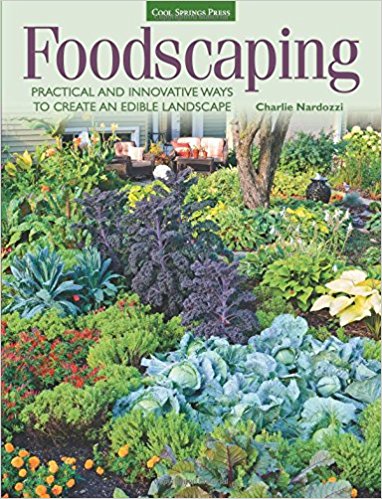
Bartlett had a taste of winter in January with bitter cold, snow, ice and the many closures that resulted from the inclement weather. Perhaps you took advantage of the snow days to contemplate your garden to envision how you might want to improve it or which new plants you will add to your beds.
If you attended the landscaping session at Bartlett Gardening University you may have taken time to begin planning an entirely new garden. By now, however, you may be suffering with a touch of cabin fever. If you are looking to get out of the house there are lots of opportunities for you to learn more about gardening so that once the weather warms and the ground thaws you can dig right into your garden projects.
Brea Arthur, author of “The Foodscape Revolution” is coming to Memphis the first week of February. Foodscaping is the concept of planting edibles as part of your ornamental landscape. Arthur knew she was onto something when she won her community’s “Yard of the Month” award and the presenter didn’t even mention the food growing in her front yard because it was so well integrated and attractive. Instead of ornamental grasses, she grows grains that she eats and uses to feed the birds.
She studied landscape design and horticulture at Purdue University, and she was a professional plant propagator at Plant Delights Nursery and Camellia Forest Nursery in North Carolina before transitioning her focus to green industry communications. As a correspondent on the PBS television show “Growing a Greener World,” Brie shares practical advice from her one-acre suburban foodscape.
You can meet Arthur at the Memphis Horticultural Society meeting at the Memphis Botanic Garden at 6:30 p.m. Feb. 6. There is a $5 fee for guests. You also can hear herat the Dixon Gallery & Gardens Munch & Learn at 11 a.m.-noon Feb. 6. The event is free with admission.
Other notable events in February include Jason Reeves, horticulturist and research associate at West Tennessee Ag Research & Education Center in Jackson. He will present “Notable Plants to Brighten Winter’s Gloom” at the Mid-South Hosta Society meeting at the Memphis Botanic Garden at 6:30 p.m. on Feb 15.
Also at Memphis Botanic Garden, the Memphis Area Master Gardeners will present “Simplicity in the Landscape” on Feb. 17, teaching attendees how to make the home garden less labor intensive. Suzy Askew, landscape designer, and the Botanic Garden’s own horticulturists, Rick Pudwell and Jim Crowder, will be presenting.
Free gardening talks
Bartlett Gardening University continues its six-part series of garden talks. The events are free and open to the public, hosted by the Bartlett City Beautiful Commission. All presentations will be provided by master gardeners at the Bartlett Library, 5884 Stage Road, on consecutive Saturdays beginning at 2:30 p.m. each week. No registration is required. Sessions this month include:
- Feb. 3, Master Gardener Bill Cummings on “Introduction to Pruning.” Reduce your fear of pruning by learning why, when and how proper pruning will keep your plants attractive and vigorous, adding years to their usefulness.
- Feb. 10, Master Gardener John Peterson on “ABCs of Herb Gardening.” Are you planting herbs in your garden or planning an herb garden? Hear some thoughts about growing herbs and some ways to use and preserve your harvest.
- Feb. 18, Master Gardener Linda Lanier on “What Hydrangea Where” (also called “Hydrangeas for Sun and Shade”). This presentation discusses which hydrangea species does best in what type of location, how to prune it and the varieties available. Talk includes many photos of hydrangeas in speaker’s garden and from garden tours.
February to-do list
- Plant (indoor): Mid-month start seeds of herbs and warm season vegetables like tomatoes, peppers and eggplant.
- Plant (outdoor): At the end of the month, plant/move/divide dormant perennials, including ornamental grasses. Plant and move roses. Before Feb. 15, sow spinach seeds and plant asparagus roots.
- Lawn care: Apply pre-emergent weed control when forsythia is in bloom. Apply post-emergent weed control as needed.
- Fertilize: Boxwood and spring flowering bulbs.
- Prune: Crepe myrtles; it is recommended that they not be topped. Prune evergreens and trees for size and shape. Remove dead wood from flowering shrubs. Cut back monkey grass, ornamental grasses and ivy. Late in the month prune hybrid tea roses by reducing canes by a third and cut out all crossed branches. Climbing roses are pruned in May.
- Other: Apply dormant oil spray if not done in January. Late in month is a good time for cleaning up. Remove debris and fallen leaves from planting beds.

